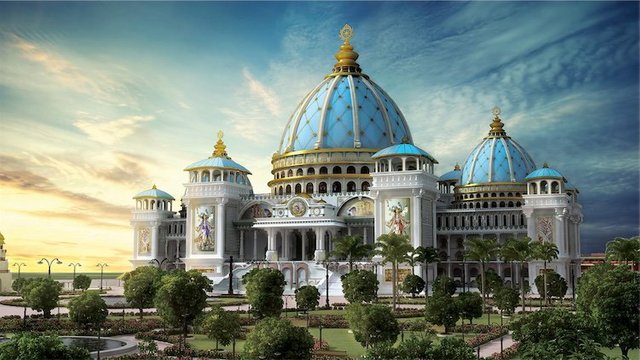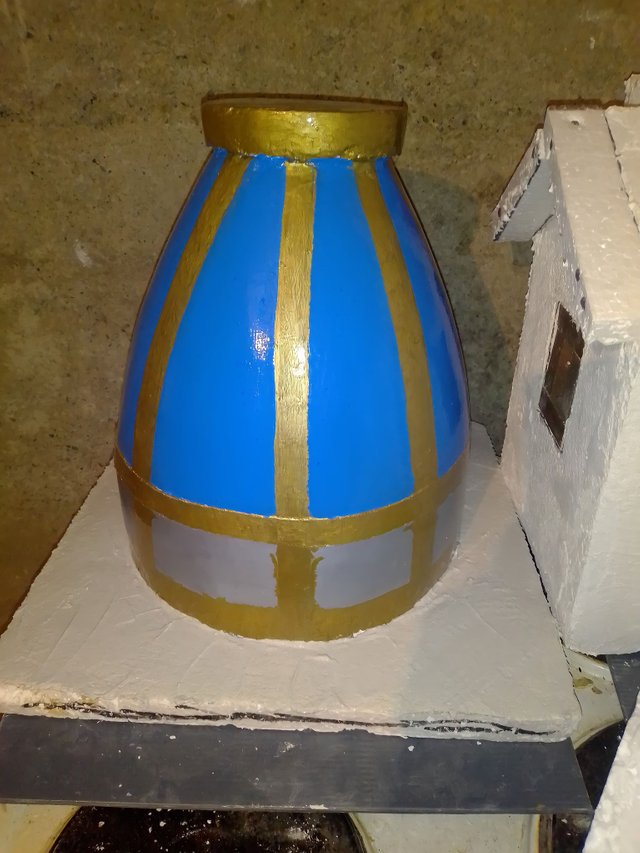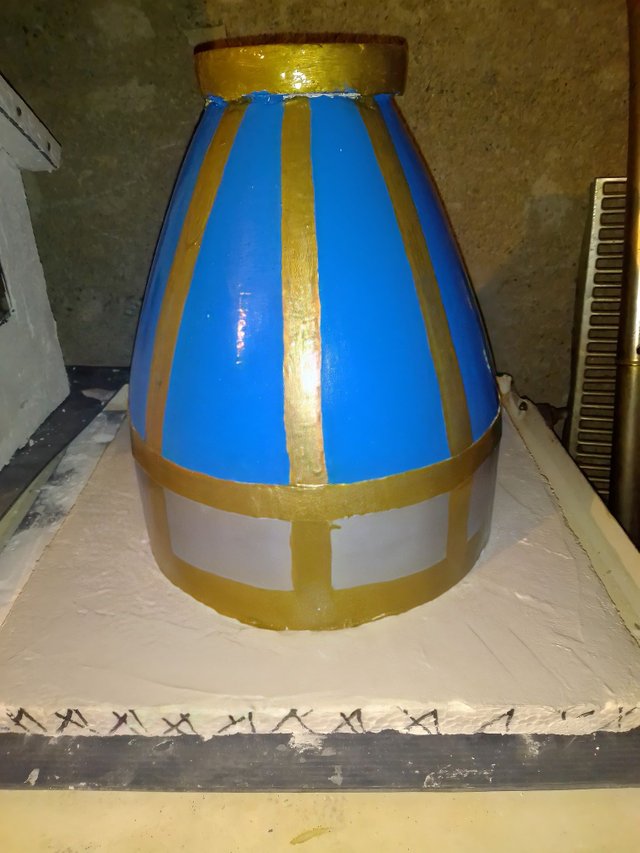Temple Of The Vedic Planetarium Artwork Part 5
- '' I have named this temple Sri Mayapur Candrodaya Mandir, the Rising Moon of Mayapur. Now make it rise, bigger and bigger until it becomes the full moon. And this moonshine will be spread all over the world. All over India they will come to see. From all over the world the will come.'' Shrila Prabhupada Source: https://tovp.org/

Source:https://iskconnews.org
- A dome (from Latin: domus) is an architectural element similar to the hollow upper half of a sphere; there is significant overlap with the term cupola, which may also refer to a dome or a structure on top of a dome. The precise definition of a dome has been a matter of controversy and there are a wide variety of forms and specialized terms to describe them.
A dome can rest directly upon a rotunda wall, a drum, or a system of squinches or pendentives used to accommodate the transition in shape from a rectangular or square space to the round or polygonal base of the dome. A dome's apex may be closed or may be open in the form of an oculus, which may itself be covered with a roof lantern and cupola.
Domes have a long architectural lineage that extends back into prehistory. Domes were built in ancient Mesopotamia, and they have been found in Persian, Hellenistic, Roman, and Chinese architecture in the ancient world, as well as among a number of indigenous building traditions throughout the world. Dome structures were common in both Byzantine architecture and Sasanian architecture, which influenced that of the rest of Europe and Islam, respectively, in the Middle Ages. The domes of European Renaissance architecture spread from Italy in the early modern period, while domes were frequently employed in Ottoman architecture at the same time. Baroque and Neoclassical architecture took inspiration from Roman domes.
Advancements in mathematics, materials, and production techniques resulted in new dome types. Domes have been constructed over the centuries from mud, snow, stone, wood, brick, concrete, metal, glass, and plastic. The symbolism associated with domes includes mortuary, celestial, and governmental traditions that have likewise altered over time. The domes of the modern world can be found over religious buildings, legislative chambers, sports stadiums, and a variety of functional structures. Source: https://mk.wikipedia.org

- We continue with the making of the domes in which I will explain in a short way how to draw the golden lines up and down the domes.

- First we start with the upper part of the dome, paint the top with gold paint, then make lines on the middle part so that when you make the first line after it you stick adhesive tape in a kind of triangle and paint the next line so you do the same in a circle until do not come to the first line and at the bottom repeat the upper lines that you made in the middle of the dome to come as windows. Also make a round line between them, also on the lowest part of the dome ...
- That was all for this blog, see you on the next blog where I will explain the other things how to do this well, thank you so much for taking the time to see these beautiful domes.
Follow me on Twitter
https://twitter.com/ZStrezosk
Welcome to Steem Schools
https://discord.gg/sHpXuHcyN4